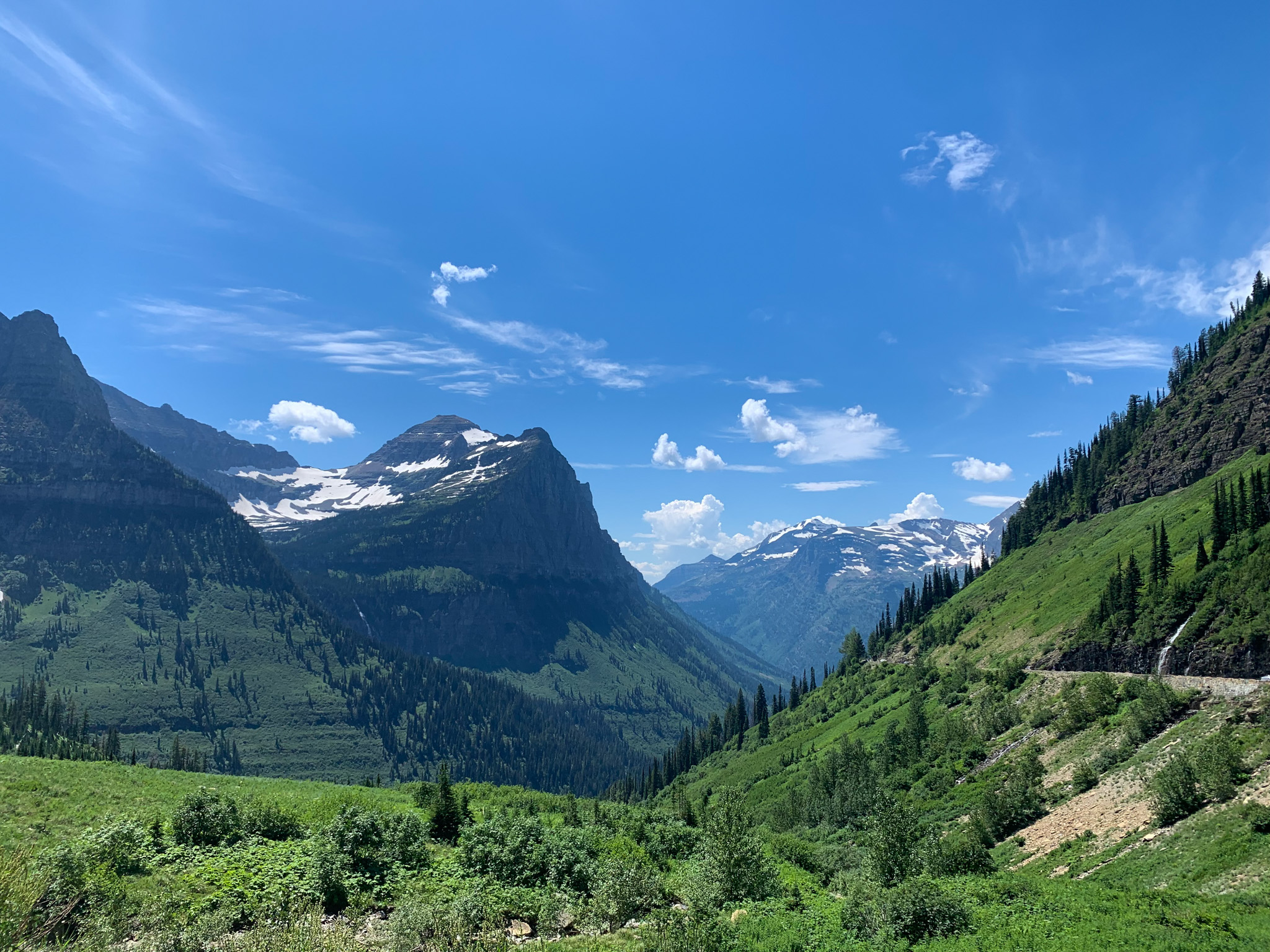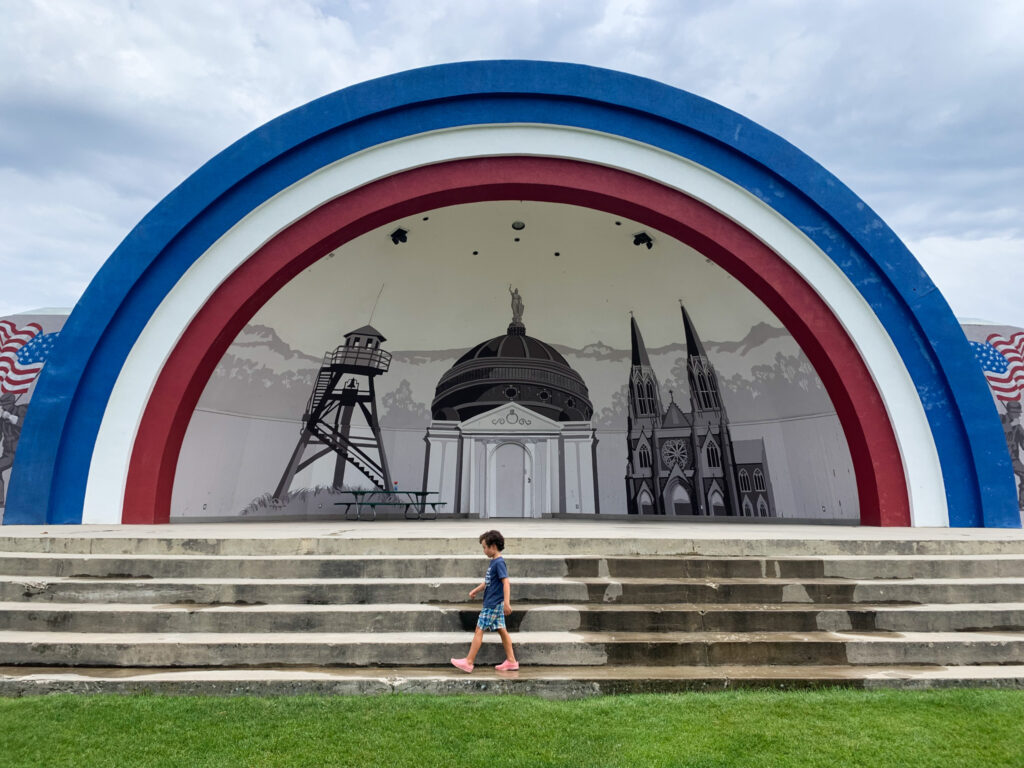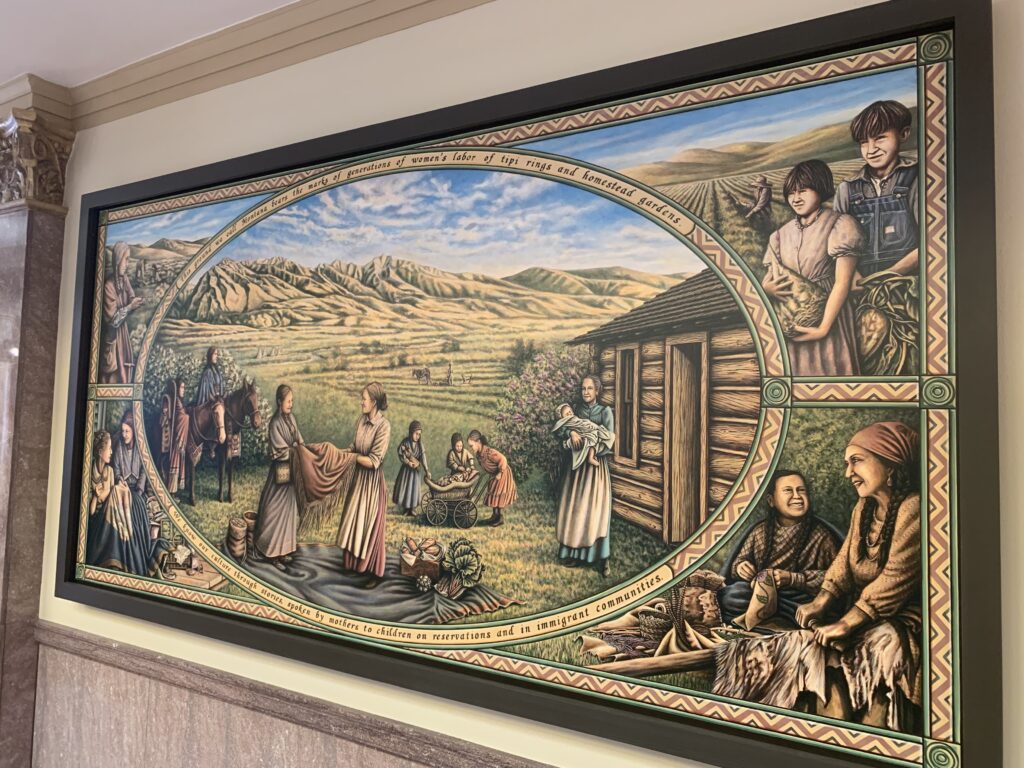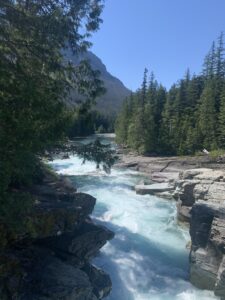A Climate Trial in Montana Sets the Scene for More
Held v. Montana is the first of many climate lawsuits by youth plaintiffs to go to trial. Big Sky Country is a fitting forum for this phase of climate change litigation.

Young people who have the most to lose from climate change have filed lawsuits in all 50 states, but the first of these cases to go to trial will be in Montana—unofficially nicknamed “the Last Best Place”—which may be the perfect venue for a landmark trial about government culpability for the global climate crisis.
Starting June 12, reporters and television crews from across the country will converge on a quaint courthouse overlooking Helena, one of the smallest capital cities in the country and one that was founded by prospectors as a mining camp. That’s where 1st Judicial District Court Judge Kathy Seeley, a state judge, will oversee a 10-day trial in the case of Held v. Montana.
The 16 teenage and child plaintiffs are seeking to pressure the state to change its energy policies, which they say involve “systemic authorization, permitting, encouragement, and facilitation of activities promoting fossil fuels and resulting in dangerous levels of greenhouse gas emissions, without regard to climate change impacts or the fundamental rights of Youth Plaintiffs and future generations of Montanans.” The nonprofit Our Children’s Trust has facilitated this lawsuit and many more across the country.

At the heart of the case is the Montana constitution’s guarantee of a “right to a clean and healthful environment” and the alleged violation of that right through the state’s unwavering support for fossil fuels. In their complaint, plaintiffs focus on the “ongoing implementation of the State Energy Policy and the Climate Change Exception to the Montana Environmental Policy Act (MEPA), which are harming these Youth Plaintiffs and infringing on their constitutional rights.” Rather than any sort of injunction, the plaintiffs are seeking declaratory relief, or a ruling that states their rights have been violated.
Now, I realize it might sound naïve to suggest Montana is any kind of friendly forum, given the state’s political leanings. Yes, Montana is deep red. (Once while driving I-15 in Montana, I saw a bumper sticker that read, “If you want to burn the American flag, wrap it around yourself first.”) But there are several reasons why this trial offers a unique opportunity to establish a fact pattern and test the legal theories of these cases.
The Treasure State
For one, Montana is a national treasure. Big Sky Country may be Montana’s best-known moniker, but it’s technically the Treasure State, a reference to its wealth of mineral resources (gold, silver, copper, and platinum) but also its grandeur. (How many states have inspired so many nicknames?) Montana is home to the natural wonder that is Glacier National Park as well as a slice of Yellowstone, the nation’s first national park. Thousands of years before President Ulysses S. Grant signed the Yellowstone National Park Protection Act into law, that plateau attracted humans with its bountiful game hunting and geothermal magic.

With gentle plains, dramatic glaciers, bucolic lakes and rivers, Montana is a wildly diverse place and it’s massive. It’s the largest landlocked state in the US, fourth largest after California, Texas, and Alaska. That diverse topography is itself a factor in the lawsuit. The state boasts a “unique and precious environment and natural resources, which the Youth Plaintiffs depend on for their safety and survival” the complaint says. The lawsuit details how the ravages of climate change have already hit hard in Montana and dramatically threatened the lives of Montanans, from dangerously increasing temperatures to changing precipitation patterns and increasing glacial melt.
Climate change is on full display
Wildfires, flooding, drought, extreme heat, and adverse health impacts play heavily in the anecdotal stories of the plaintiffs, many of whom describe the threats to Montana’s homesteading culture of hunting and living off the land. Named plaintiff Rikki Held (and the only one who was 18 years old when the suit was filed) lives with her family on a 7,000-acre ranch where they depend on water rights to a river that has dried up and land that’s been scorched by wildfires. Another plaintiff, Sariel Sandoval, (age 17 at the time of filing), grew up on the Flathead Indian Reservation as a member of the Confederated Salish and Kootenai Tribes. She’s seen similar impacts from fire and drought, which hasn’t just threatened her family’s livelihood but has challenged her community’s ability to practice their cultural traditions and pass them down, threatening a profound emotional and psychological loss. (A throughline of all the plaintiff’s stories is the emotional stress and strain of climate change.)
In fact, plaintiffs allege that Montana has warmed more than most of the contiguous United States because northern latitudes heat more quickly. “As a result of the average temperature increase, heat waves are becoming more common and snow is melting earlier in the spring season,” the complaint says. “In Helena, for example, the number of summer days above 90° F has increased by 20 days between 1970 and 2019.”

The first time I spent a summer in Montana, the natural beauty of the place was on full display—so was its changing climate. June was unusually hot that year, locals said, and the air was milky with smoke from wildfires. These fires were both local and distant, as wind blew smoke from Northern California and Canada wildfires into Montana’s borders. Visitors to Yellowstone that summer were warned of poor air quality, and the haze lent a creepy background to the pilgrimage millions of people make each year to the nation’s first national park. The very next spring, visitors to Yellowstone were pushed out of the park due to a dangerous 500-year flood event. Montana has been through the ringer lately.
‘The most robust of all the state environmental rights provisions’
It’s easy to assume that these plaintiffs and their lawyers from a national organization will be dismissed by Montanans as coastal elites coming to take away their gas stoves and ban their pickup trucks. And that sentiment will certainly be present. But there’s a deep vein of independent, anti-corporate conservatism in Montana’s history that could lend itself to skepticism of government policies that put the interests of energy companies over people. That history is evident in the state constitution itself.
Enacted in 1972, the state constitution begins, “We the people of Montana grateful to God for the quiet beauty of our state, the grandeur of our mountains, the vastness of our rolling plains, and desiring to improve the quality of life, equality of opportunity and to secure the blessings of liberty for this and future generations do ordain and establish this constitution.” It goes on to talk of restoring the environment for future generations. That’s not an abstract idea, but rather a specific reaction to the degradation caused by mining. Michelle Bryan, a law professor at the University of Montana says one way to view the 1972 Constitution is as “Montana’s declaration of independence from corporate mining.” Decades of mining devastated Montana’s environment and those most responsible walked away, leaving state taxpayers with the bill to clean up toxic pollution. Bryan says the framers of the 1972 constitution sought to prevent such harms from repeating.

There is case law in Montana that’s created a standard of “strict scrutiny” for government actions. In 1999, the Montana Supreme Court issued a decision in a case called Montana Environmental Information Center v. Department of Environmental Quality (MEIC), “holding that Montana’s right to a clean and healthful environment is a fundamental right that requires the government to show a compelling state interest before allowing environmental harm to occur,” as Bryan notes in this 2010 journal article. That landmark case stemmed from plaintiffs challenging a mining exploration license and related permits that allowed a company to discharge arsenic into nearby rivers. Bryan goes on:
“The state agency granted the exploration license under a statutory exemption that allowed such discharges without nondegradation review. The supreme court applied strict scrutiny to the agency’s actions, concluding that there was no compelling reason to allow such an exemption. The ruling was also notable for its prospective view of environmental harm: the possibility of environmental harm is sufficient to state a cognizable claim. In historic language, the court stated: ‘[W]e conclude that the delegates’ intention was to provide language and protections which are both anticipatory and preventative. The delegates did not intend to merely prohibit that degree of environmental degradation which can be conclusively linked to ill health or physical endangerment. Our constitution does not require that dead fish float on the surface of our state’s rivers and streams before its farsighted environmental protections can be invoked.’”
Based on that judicial affirmation of environmental rights and the state constitution’s strong language, Bryan writes, “Montana’s environmental provisions are considered the most robust of all the state environmental rights provisions.”
Saying the quiet part out loud
Montana is a fitting venue because the state’s actions are so blatant. No one would accuse the 2023 Montana Legislature of subtlety. (It’s gone hard right in more ways than one.)
The plaintiffs are challenging Montana’s State Energy Policy for promoting coal and expanding oil and gas exploration. They’re also challenging MEPA’s Climate Change Exception, which states that any environmental review “may not include actual or potential impacts that are regional, national, or global in nature.” That has been interpreted, plaintiffs say, to mean that Montana agencies cannot consider the impacts of climate change in their environmental reviews even though Montana’s Office of Energy and Environmental Affairs has determined that “damage to the environment,” as used in MEPA, includes the emission of greenhouse gases caused by projects subject to MEPA review.
On the eve of this landmark trial, Montana tried to undercut the case by passing legislation that repeals the State Energy Policy at issue. If the states’ attorneys hoped the trial was rendered moot, it hasn’t worked. When they asked why they should go to trial regarding “the enforcement of a statute that no longer exists,” Judge Seeley told them they need to prepare for the June 12 trial, saying “I don’t find this to be nearly as substantive to the issues raised in this case as you do. It is the statute that they cited, it has been clarified, and it seems to me that preparations that you have done would all be applicable to this statute as amended.”
To help underline that Montana has not changed its policy of promoting fossil fuels, the governor also signed HB 971, a bill that explicitly bans state regulators from considering carbon emissions or the impact on climate change when approving a project. In other words, the state turned its abstract, de facto ban on considering climate change into an outright and explicit ban on considering climate change.
When it comes to disregarding environmental protections, Montana lawmakers are now saying the quiet part out loud.

When the 16 youth plaintiffs arrive at court, their lawyers will have the burden of showing how—and to what degree—state policies have harmed them and their families and future generations. No small thing. But the state’s lawyers will have to show a compelling interest for Montana to disregard carbon emissions, climate science, and the harm caused by the state’s energy policies. It will be fascinating to watch how the judge considers those competing interests; how she interprets the science; and whether the proceedings offer any clues for how other courts (especially in states whose constitutions mention the right to a healthy environment) will grapple with these cases.
And it should be easy to watch because the trial will be livestreamed. The court clerk says the District Court will provide a link a week before the June 12 start date.
Reader Comments
2 Replies to “A Climate Trial in Montana Sets the Scene for More”
Comments are closed.







Very compelling and well-researched piece. It seems possible the ruling in this case could provide a way forward for other such plaintiffs in the future.
Mr. George writes well but fails in understanding the controversy, science, and law so his article is at the least unsupported in many points and at worst misleading. He has fallen for the common error of assuming that “everyone knows what climate change is and does” then goes on to make unsupported claims about “evidence” of the undefined problem. Is it too difficult to give a definition of your central theme? Start with “Climate”. It is the prevailing characteristics of weather parameters in an area over a long time-usually 30 years. So how do these children testify to observing deleterious Climate Change if the oldest has only witnessed slightly more than ½ data point? Now let’s tackle “Climate Change”. Once again Mr. George assumes climate does not change unless humans mess it up and adds the assumption that all Climate Change is due to human emissions of greenhouse gasses. Both assumptions are grossly erroneous. 20,000 years ago the Madison and Gallatin and Absaroka ranges were under a glacier. When John Colter came through here he never mentioned seeing a glacier. There were no glaciers in Glacier National Park 7000 years ago. They all came about due to natural climate change.
Mr. George writes: “The lawsuit details how the ravages of climate change have already hit hard in Montana and dramatically threatened the lives of Montanans, from dangerously increasing temperatures to changing precipitation patterns and increasing glacial melt.” If the lawsuit indeed details these things the lawyers that put it together have found a source of fictitious data because the hard data does not support any of it. Montana was generally hotter and drier with more extreme events in the 1930s and 40s, and colder in the 1970s than it is now. A study of 30 year plots of temperature, precipitation, snow cover, and wind patterns reveals very little change. These children have modern technology to protect them and are in no danger from “Climate Change”.
The most important error in the misinformation contained in this article is the assumption that “Climate Change” is caused by human emissions, it is bad, and our State Government can fix it. There is no empirical evidence that human emissions of CO2 causes global warming. If it does we can’t detect the signal yet. There are literally hundreds of other changing factors that effect climate and dozens of good peer reviewed works that posit alternate explanations for the mild recent warming. There is very good reason to conclude that humans are not even responsible for most of the recent increase in atmospheric CO2.
The most dangerous outgrowth of these misunderstandings is certainly not an unlivable climate but misguided policies that that remove our ability to live productive and enjoyable lives.